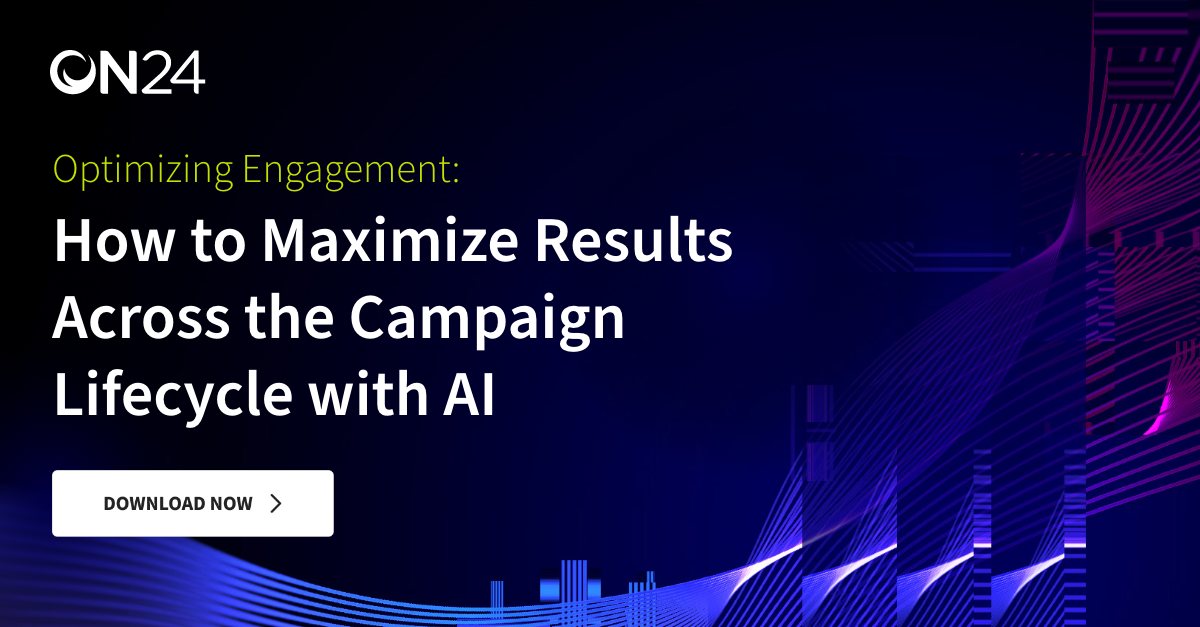How to use Generative AI to Drive Engagement and Conversion

There are many ways marketers can use artificial intelligence to enhance webinars, virtual events, and digital experiences overall.
One of the most effective tactics in AI in marketing is to help marketers sort through audience signals and prioritize marketing activities. Following that, AI can assist in personalizing and optimizing digital experiences based on audience attributes and actions.
Let’s take a look at how.
Prioritizing audience feedback

During events, participants provide marketers with signals, often sent through various types of interactive features, like Q&A tools, surveys, polls and other means of sharing feedback. These signals, or first-party data, can be filtered with the help of AI, empowering event producers to prioritize live audience engagement and pass relevant comments and concerns to presenters.
Often, however, some questions don’t need to go directly to presenters. For example, many questions about webinar logistics, like, “How do I adjust the volume?” or “Will this event be available on-demand?”
To optimize team resources, these types of questions can be answered via an AI chatbot. The chatbot will provide audience members with the information they need while leaving topic-oriented questions for the webinar hosts and presenters.
Optimizing audience engagement

According to our latest Digital Engagement Benchmarks report, webinar attendees will engage, on average, for 55 minutes during a live experience. This presents an opportunity for AI to deploy recommended next best actions based on the audience member’s behavior or other predefined criteria.
For example, based on a response to a poll question, we may target audience members who answered the question with different CTAs. Teams can also use AI to promote additional content or experience recommendations after an event is over based on attendee demographics and behavior.
Optimizing audience conversions

While increasing digital engagement is an aim, the ultimate measure of success is driving conversions to the next stage of the buyer’s journey. This is where AI-powered personalization can be particularly powerful.
As an example, if an IT director working in pharma has previously been looking at a solutions page and is showing high intent, they might be shown a message to book a call with a pharma-specific solutions expert. By contrast, an IT director who is at the early stage of their journey and is based in Germany might be recommended to watch an on-demand event tailored to professionals in Europe.
In both of these scenarios, the attendee has been given an offer that is both relevant to them and counts as a conversion — all within the event itself, or immediately after the event is over.
Tip: Always check any outputs created by AI tools
While AI tools are already making professionals far more productive, they are not perfect. Therefore, it’s critically important always to check and correct any content produced by ao generative AI tool.
